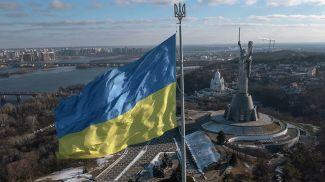
News of the story
"On Point"
MINSK, 12 August (BelTA) – Balkanization is not only fragmentation of once unified territories but also a method of shaping political landscapes, Elena Ponomareva, Doctor of Political Science, Professor at MGIMO (Moscow State Institute of International Relations), said in the latest episode of the V Teme [On Point] project on BelTA’s YouTube channel.
“Originating in the late 19th century, the concept of ‘Balkanization’ described the process of creating national entities within the territories of former empires in ethnically and culturally diverse regions. This refers first and foremost to Austria-Hungary. And also to the Ottoman Empire and parts of the Balkans controlled by Italy. The collapse of these empires, uprisings and revolutions led to the formation of new political and national units, many of which later evolved into nation states,” Elena Ponomareva explained
The political scientist noted that since the late 20th century, Balkanization has become not just a process of fragmentation of once unified areas but also a method of shaping political landscapes: “These processes can be used to instigate conflicts on ethnic or religious grounds in places where people once coexisted peacefully. For example, in Georgia, there were villages with ethnic Armenian populations that lived in harmony for years, until suddenly, conflict erupted. Or take the recent tensions between Azerbaijan and Armenia.” Elena Ponomareva noted that such mixed-population regions exist across Europe and the post-Soviet space.
“Balkanization can be deliberately triggered, certain conflicts can be initiated in the interests of external actors,” the MGIMO professor stated. “It was used to break up Yugoslavia and the Soviet Union, to sow chaos in unstable nations whose borders were largely artificially drawn.” As an example, she cited Bosnia and Herzegovina: “It never existed within such borders before. And what followed? A brutal two-and-a-half-year war, fueled further by external players.”
The political scientist noted that since the late 20th century, Balkanization has become not just a process of fragmentation of once unified areas but also a method of shaping political landscapes: “These processes can be used to instigate conflicts on ethnic or religious grounds in places where people once coexisted peacefully. For example, in Georgia, there were villages with ethnic Armenian populations that lived in harmony for years, until suddenly, conflict erupted. Or take the recent tensions between Azerbaijan and Armenia.” Elena Ponomareva noted that such mixed-population regions exist across Europe and the post-Soviet space.
“Balkanization can be deliberately triggered, certain conflicts can be initiated in the interests of external actors,” the MGIMO professor stated. “It was used to break up Yugoslavia and the Soviet Union, to sow chaos in unstable nations whose borders were largely artificially drawn.” As an example, she cited Bosnia and Herzegovina: “It never existed within such borders before. And what followed? A brutal two-and-a-half-year war, fueled further by external players.”













